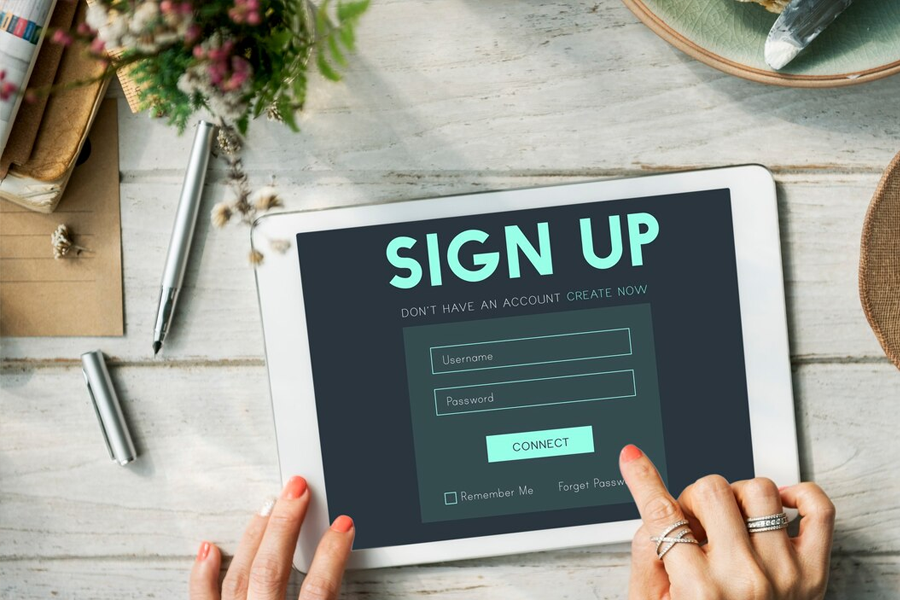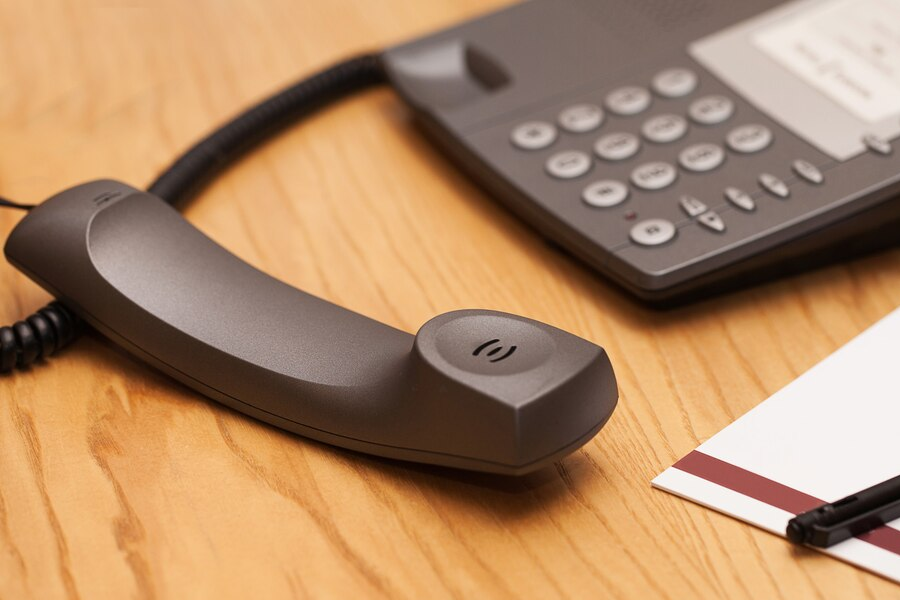
Say you have a product or an offer that you’re sure will be a success – if it just got discovered by the right people. What do you do?
“Sell it” might be the first thing that comes to your mind, and you’d be right. But who do you sell it to? And how? These questions seem simple, but they’re age-old problems that every business person has faced since the dawn of commerce.
Fortunately, there’s one sure strategy to sell your products: cold calling.
This tried and tested lead generation technique has been around since telephones were invented, and has only been refined in recent years. If you want to start making your offers the success that they surely are, learning the best practices of this fundamental technique is a must.
This article will cover everything you need to be a cold calling sales expert. Let’s begin.
What Is Cold Calling: Definition and Principles
Cold calling is a technical term for a sales technique where a salesperson contacts a potential customer and tries to sell a product.
Sellers typically follow these fundamental principles to sell their products through cold calling:
- Research your prospects: Know who you’re calling. Understand their needs, wants, and fears even before you call. Cold calling is time-intensive compared to other sales techniques, so don’t waste time on people who don’t want or need your products.
- Be prepared: The best cold callers have a script that they follow to move prospects from cold to warm. These guide scripts must be based on your research and unique to your specific offer.
- Practice your pitch: The best cold calls might seem spontaneous and authentic, but that comes from good practice. Know your script well — practice your delivery well, so you can adapt it to however the conversation might unfold, and still be on track.
- Handle rejections politely: As much as you prepare, not everyone will be interested in your products. Learn how to accept their no graciously and move on. Being unreasonably persistent will only destroy your image.
- Follow up on good calls: If prospects show interest, decide on an appropriate time to follow up. Approach them with more information or set up a meeting. Persistence is key to those who might want your offer.
The salesperson will contact someone who seems to be an ideal, but who likely doesn’t know the product yet. This is called a “cold” lead, and if they get interested, they’ll be called a “warm” lead.
This sales strategy started in the early 20th century. Instead of sending door-to-door salespeople, telephones became a convenient means of contacting people to sell products.

Cold Calling Best Practices
Today, cold calling is not as common, but it’s still incredibly useful for the right products.
This approach is useful for generating new leads. You can immediately gauge your prospect’s interest, which helps to adjust sales tactics and strategies on the fly.
Plus, talking over the phone still gives a far stronger impression. Hearing another person’s voice still forges a stronger connection, essential for quickly building trust and rapport compared to impersonal things like email.
Typically, high-ticket or complicated products benefit the most from cold calling, so if your business fits this bill, then the following best practices will boost your strategy.
Use Cold Calls for Effective Lead Generation
Cold calls are primarily used for lead generation. This approach involves systematically reaching out to potential customers who have not interacted with your business before.
Unlike what you might think, the main goal here is to identify and cultivate potential leads rather than make an immediate sale. Rather than being pushy about a product that they’ve never heard before, merely scouting new leads fills your sales funnel with new prospects that can be nurtured for business growth.
To achieve this, segment your market and tailor your calls to each segment.
Your audience is broad – even those that belong to your target market can be further subdivided. Each segment can have different wants and needs, and thus, different approaches to cold calls. This ensures that the message is relevant and likely to be positively received.
Build Connections through Outbound Sales Calls
Building connections involves creating rapport with the person on the other end of the line, rather than treating them as mere numbers.
It’s important to remember that your potential customers are human, with human wants and needs. Thus, the way to their hearts is through emotion – people are more likely to do business with someone they feel connected to or trust.
When calling, aim to understand the needs and challenges of your prospect. Show genuine interest in helping them solve their problems. A good tip here is to use open-ended questions that encourage discussion.
Use it to organically create a more engaging conversation and a stronger, human-to-human connection.
Craft an Engaging Pitch for Prospect Outreach
A good sales pitch doesn’t just mean talking about the features of your products and services.
It’s a combination of engaging delivery and a customer-centric approach. Your sales pitch should solve your customer’s problems and improve their situation. Through this, you can capture and hold the prospect’s attention, making them more open to hearing and considering what you have to offer.
To master this best practice, you must strategize.
Ensure your pitch is concise and directly addresses the pain points of your audience – for that, you need data. Know your audience properly, and then learn how your offers can connect to what they need.
Practice delivering your pitch in a way that feels natural and convincing. A confident delivery makes a significant difference in the outcome of your calls.
Have a Persuasive Cold Call Script
One of the most important things to nail down even before you begin calling people is your script. Whether you’re calling your customers in Indonesia yourself or employing a massive call center, having a script elevates the quality of your call.
Using a script ensures that you deliver a consistent message, maintain professionalism, and cover all critical points without forgetting any details, all while maintaining an organic conversation. It helps in managing the flow of the conversation without devolving into pleasantries and chattering.
A persuasive call script should include the following elements:
- A strong opening: Start with a clear introduction of yourself and your purpose, balanced with artistry. You should hook your listeners right from the start. This sets the stage and captures the listener’s interest.
- Value proposition: Your value proposition should be clear in all your cold calls. Clearly articulate how your offering solves a problem or improves the customer’s situation. Focus on benefits, not just features.
- Engaging questions: Include questions that encourage the prospect to talk about their needs and challenges. This helps in tailoring your responses more effectively. Plus, as mentioned, it creates rapport and makes it easier to trust you.
- A call to action: End with a specific step, such as setting up a meeting or a follow-up call. It shouldn’t just be specific, but also clear. Your potential customers should know exactly what to do next to advance the conversation.
Not using a script can lead to a lack of focus in your calls, missing important information, or failing to make a compelling case to your prospects. Worse – you’ll be wasting both your and your prospect’s time, as conversations can all too easily get off track without a set path.

Turn Calls into Opportunities
While the primary purpose of cold calling shouldn’t be to push products, customer acquisition techniques are also possible for prospects who express interest and are ready. Customer acquisition simply means bringing new customers to your business.
In cold calling, effective customer acquisition doesn’t happen often, but it does happen. When you meet receptive customers, you should know what to do with them.
But how can you tell? Here are a few telltale signs:
- Asking detailed questions: If a customer starts asking specific questions about your product or service, it’s a good sign they’re considering its relevance to their needs.
- Discussing their needs: An interested customer often shares details about their challenges or goals, indicating they are looking for solutions.
- Requesting more information: When a customer asks for additional details, documents, or a follow-up meeting, it shows they are actively considering your offering.
- Positive reactions to your pitch: Noticeable enthusiasm or positive comments about your product or service can signal genuine interest. Look out for signs of praise or wonder.
- Extending the conversation: An interested customer might keep the conversation going, ask for your contact information, or suggest a next step on their own
These signs suggest that a prospect is more than just curious – they are considering a purchase. If you observe these from your calls, be prepared to shift from simple lead generation to lead conversion.
Nevertheless, remember that this might happen rarely. Many people find unsolicited calls intrusive, no matter how well you research your target audience.
Conversations That Count: Metrics and Qualification
Metrics are the data points you track to evaluate the effectiveness of your calls.
They help you understand how well you’re qualifying prospects into leads or customers. They help you assess which aspects of your calls are working and which are not. Through these, you refine your approach to better improve your results.
The most important metrics to track for qualification in cold calling include:
- Conversion rate: Measures how many of your calls result in a positive outcome, such as a follow-up meeting or a sale. The higher the conversation rate, the better your strategy is in achieving the outcome that you want.
- Call length: Longer calls might indicate higher interest, helping you identify which calls are worth pursuing. However, this metric might not be as useful when used alone.
- Lead response time: This metric is the time it takes for a prospect to respond after a call can indicate their level of interest. The shorter the lead response time, the more interested a prospect tends to be.
- Number of follow-ups: This metric tracks how many times you need to follow up with a prospect before achieving a result. Fewer follow-ups typically indicate stronger initial interest.
If you’re not tracking these metrics, you risk missing critical insights into your sales process. Without this data, you can’t effectively optimize your approach. Tracking the right metrics lets you fine-tune your cold-calling strategies, making each call more strategic and potentially more successful.

How To Do Lead Qualification for Better Scheduling
Lead qualification is the process of assessing whether a prospect is likely to become a customer.
Qualifying prospects is usually done based on specific criteria, such as need, budget, authority, and timeline. This helps you decide whom to spend more time on and schedule follow-up calls with, ensuring you focus your efforts on the most promising leads.
This practice streamlines your cold calling efforts by allowing you to prioritize Indonesian prospects who are most likely to convert, improving your sales process efficiency. If you want to master qualification, you must develop a clear set of criteria to use, tailored to your specific products or services.
Focus on identifying key indicators or a qualified lead, such as the following:
- Favorable cold call metrics;
- Their capacity to make purchasing decisions;
- How relevant your products are to their needs;
- Their readiness to buy.
By establishing these criteria and training your team to apply them consistently, you can make your cold-calling process successful.
Best Practices in Cold Calling Follow-ups
Follow-ups are when you reach out after the initial contact with a prospect. A good follow-up strategy is vital because it keeps the conversation going. It nurtures a relationship that will eventually make them paying customers.
Effective follow-ups boost your cold calling strategy by maintaining engagement with potential clients, and nurturing them across time by providing value. Eventually, when they feel more ready to commit, you will be at the forefront of their minds over competitors.
Best practices for conducting follow-ups include:
- Timing your follow-up: Aim to reach out within a few days after the initial call to keep the momentum. Delaying too long might cause the prospect to lose interest. On the other hand, too soon and you might become a nuisance.
- Personalize your approach: Tailor your follow-up based on the conversation you had. Reference specific points discussed to show attentiveness and commitment to their needs. Data is important here, like notes, metrics, or even a call recording.
- Use multiple channels: Besides phone calls, use emails or messaging as part of your follow-up strategy. Having multiple angles maximizes your chances of re-engaging the prospect.
- Set clear objectives: Each follow-up should have a clear purpose, whether it’s to gather more information, answer questions, or close a sale. This purpose should be according to your thorough assessment of your prospect.
If your follow-up isn’t good, you can miss important opportunities. Without these steps, potential leads will forget you, and they’ll likely turn to competitors who are more diligent in maintaining contact and are thus at the forefront of their minds.
Proper follow-ups ensure that you stay top-of-mind and demonstrate your dedication to meeting the prospect’s needs.

Final Thoughts
Cold calling might seem like an old business strategy that has no place in the present, but you’d be wrong. Calls simplify a complex discussion and, most importantly, develop trust in ways that other digital outreach simply can’t.
If you want your high-ticket business in Indonesia to succeed, then learning cold calling best practices should be at the top of your list.
Master the principles in this article, and call success to your side!
Frequently Asked Questions
What are effective strategies for cold calling in a diverse market like Indonesia?
At the top of the list is learning the best practices for cold calling and mastering them. Then, you look into tailoring your approach to respect cultural differences. Understanding local business etiquette and using the Indonesian language might also enhance receptiveness
What technology tools can assist in improving cold calling strategies?
Some beneficial technologies to consider: CRM software to manage leads, auto-dialers to increase call efficiency, and call analytics tools to measure and improve call effectiveness.
What are the legal requirements for cold calling in Indonesia?
Business owners need to be aware of Indonesia’s regulations on telemarketing and privacy laws to ensure compliance when making cold calls.